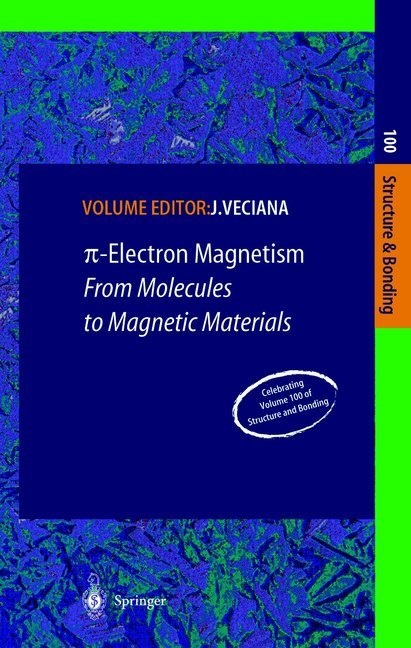Read more
Celebrating Volume 100: Thirty years ago Springer-Verlag together with a distinguished Board of Editors started the series Structure and Bonding. Initially the series was set up to publish reviews from different fields of modern inorganic chemistry, chemical physics and biochemistry, where the general subject of chemical bonding involves a metal and a small number of associated atoms. Three years ago the aims of the series was refined to span the entire periodic table and address structure and bonding issues wherever they may be relevant. Not only the traditional areas of chemical bonding will be dealt with but also nanostructres, molecular electronics, supramolecular structure, surfaces and clusters. With these aims in mind it is noteworthy that Volume 100 effectively reinforces and illustrates these ideals and is titled Pi-Electron Magnetism from Molecules to Magnetic Materials.
List of contents
An Organic Radical Crystal Showing Spontaneous Ferromagnetic Order.- The Mechanism of the Through-Space Magnetic Interactions in Purely Organic Molecular Magnets.- Metal-Aminoxyl-Based Molecular Magnets.- Magnetic Properties of Thiazyl Radicals.- Magnetism in Fullerene Derivatives.- Molecular Compounds Showing a Spin Ladder Behaviour.
Summary
Celebrating Volume 100: Thirty years ago Springer-Verlag together with a distinguished Board of Editors started the series Structure and Bonding. Initially the series was set up to publish reviews from different fields of modern inorganic chemistry, chemical physics and biochemistry, where the general subject of chemical bonding involves a metal and a small number of associated atoms. Three years ago the aims of the series was refined to span the entire periodic table and address structure and bonding issues wherever they may be relevant. Not only the traditional areas of chemical bonding will be dealt with but also nanostructres, molecular electronics, supramolecular structure, surfaces and clusters. With these aims in mind it is noteworthy that Volume 100 effectively reinforces and illustrates these ideals and is titled Pi-Electron Magnetismfrom Molecules to Magnetic Materials.

